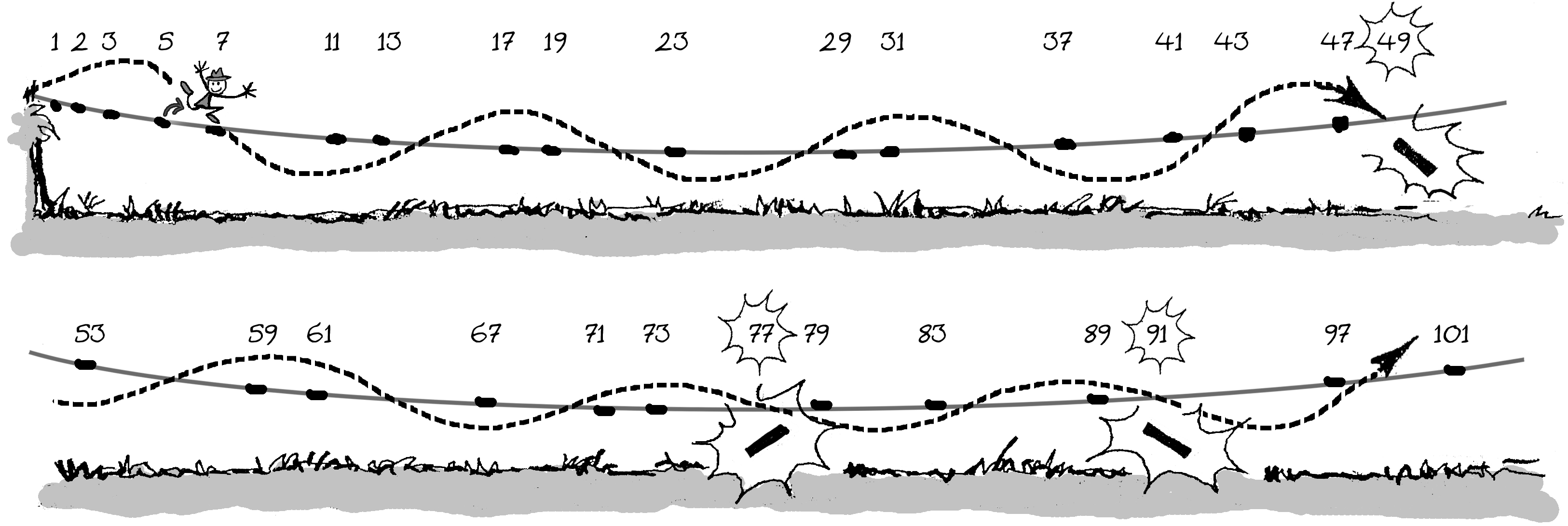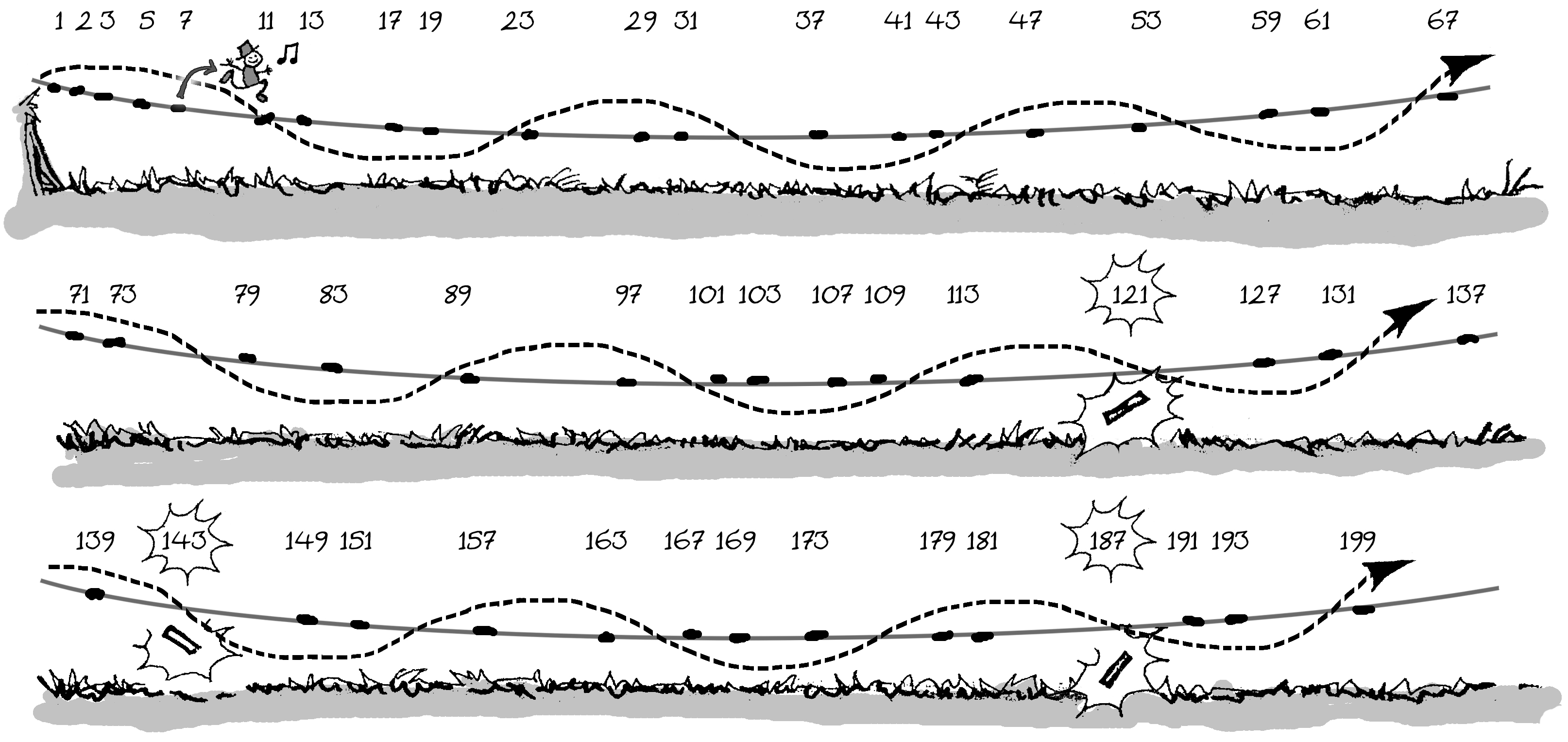
The Sieve of Eratosthenes for kids (of all ages)
[Adapted from my book The Mystery of the Prime Numbers (Secrets of Creation, volume 1)]
Imagine that you're standing on the first plank of an infinitely long rope bridge with wooden planks across it, labelled with the counting numbers. You're standing on plank 1 and your task is to keep jumping to the next available plank. But each time you do this, it will knock out some of the planks which lie ahead of you.

It works like this. You jump onto plank 2, and that sets up a sort of wave which knocks out every second plank after it (4, 6, 8, 10, 12,...) as shown here:

But plank 3 is still there, so you jump onto that. By doing so, you create another wave which passes through the position of every third plank after it (6, 9, 12, 15,...), knocking out any that are left (9, 15, 21,...), as shown here:

You're now standing on plank 3, and plank 4 is gone. So you have to jump a bit farther this time, to plank 5. The wave that's created then passes through the position of every fifth plank (10, 15, 20, 25,...), knocking out any that are left (25, 35, 55, 65,...).

Now you're on plank 5, and plank 6 is gone. Another short hop takes you to plank 7, sending a wave through the position of every seventh plank (many of them now gone as the result of earlier waves – 14, 21, 28, 35, 42,...), taking out 49, 77, 91,...

Planks 8, 9 and 10 are all gone, so this time you have to take a bigger leap to plank 11, which will set up a wave through 22, 33, 44, 55, 66, etc. – those first few are already gone, but the wave will eventually take out 121, 143, 187...

Plank 12 is gone, but 13 is still there, so there's an easy jump from 11 to 13. From 13, you must jump to 17 (14, 15 and 16 all now being gone). From there you jump to 19, then on to 23 from which you must make your biggest jump yet, to...
It turns out that every jump you make will knock out infinitely many planks farther down the line. So the farther we go, the more "thinned out", the fewer and farther between, we can expect the planks to become. Clearly, we'll have to make some considerably bigger jumps as we carry on along the bridge. Some very big jumps, as it happens – as big as you care to name.
Notice that all of the planks you jump onto are numbered with prime numbers. The complete collection of prime numbers would perfectly match the numbers of those planks that would be left on the bridge "at the end of time" (that's only meant in a playful sense, as this is an "impossible" visualisation involving an infinitely long bridge to nowhere!). The variation in the gaps between these planks – that is, the distances you have to jump – shows you the lack of any pattern in the prime numbers.
The visualisation we've just seen is based on something called the Sieve of Eratosthenes. Eratosthenes was from what is now Libya and worked in the 3rd century BCE as librarian of the Library of Alexandria, then the world's greatest centre of learning. His "sieve" is the standard way of systematically producing a list of prime numbers, still taught to schoolchildren (usually in a much more boring way, crossing out every second, every third, every fourth, every fifth,... number in a list). A computer can quickly produce a long list of prime numbers with this method, although even the fastest computer is soon stretched to its limits once the numbers reach a certain size. More specialised and efficient types of "sieving" have been developed, allowing computers to find larger and larger prime numbers. In fact, there's a whole branch of number theory called sieve theory.
mystery new search home